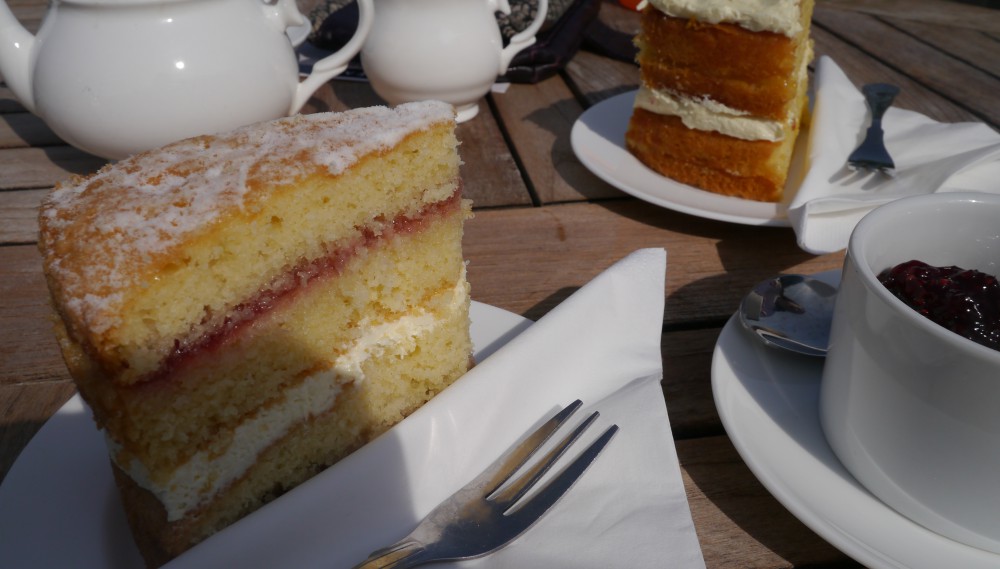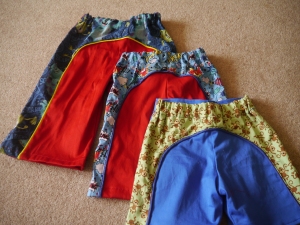This week I enjoyed a cup of coffee and a chat in Oxford with Anna Weston, author of The Global Bakery: Amazing Cakes from the World’s Kitchens. We had a long talk about baking, fancy-pants equipment, the delights of sharing cakes, and the wonderful opportunities for ingredients shopping on the Cowley Road.
 I started by asking her how she chose which cakes would feature in her book. As she says in her Introduction, she began with the premise that every culture has a cake; and so she made a list of all 197 countries in the world, and started filling it with cakes. The internet, of course, was an invaluable tool in her research, but colleagues, family, and foreign exchange students were all eager to share recipes and tips for the cakes of their homelands. One of the best compliments Anna has received since the publication of the book is the number of people who have told her that a certain cake reminds them of their childhood, their grandmother, or their travels abroad. More proof for the theory that cake is a source of happy memories!
I started by asking her how she chose which cakes would feature in her book. As she says in her Introduction, she began with the premise that every culture has a cake; and so she made a list of all 197 countries in the world, and started filling it with cakes. The internet, of course, was an invaluable tool in her research, but colleagues, family, and foreign exchange students were all eager to share recipes and tips for the cakes of their homelands. One of the best compliments Anna has received since the publication of the book is the number of people who have told her that a certain cake reminds them of their childhood, their grandmother, or their travels abroad. More proof for the theory that cake is a source of happy memories!
I was interested to hear how the final selection of 64 came about. Both Anna and her publisher were clear that they wanted a range of types of cakes, a good coverage of countries across the world, the avoidance of too much duplication of key ingredients (a challenge, given that many cakes from the same broad region share the same flavours – like oranges and honey in the Middle East), and of course, some personal favourites. Anna also wanted to be able to say to her readers, ‘you can do this at home’. So, no special equipment or techniques which couldn’t be easily explained. Finally, the recipes all had to be cakes – an obvious point, perhaps, but one which led to an interesting discussion of what this meant. Both of us agreed that not all sweet things can be counted as cakes, as some other food writers have expansively decided. For Anna, the defining characteristic of a cake is its texture (something which is hard to pin down in words) and its sweetness. The ingredients are less important – not all cakes include hard fats, for example. The method can also vary: the New Zealand Louise Cake which features in the book, starts off with rubbing fat into flour, like a shortbread – though it actually comes out tasting very cakey. Only two recipes in the book defy these rules: the Czech Buchty, which is a yeasted bread (the Czechs apparently don’t really do cakes) – but one which is filled with a delicious-sounding cottage cheese, poppy-seed-and-sugar-mix; and a Swiss Nusstorte (tart) which – how to put this delicately? – was the result of a heavy steer from a publisher. It is, however, ‘to die for’ according to Anna, so we can perhaps forgive it its place.
One of the most interesting things about Anna’s book is the idea of a ‘global’ bakery. It really shows us both the common features and the individual traits of cakes in different lands. The entry from Patagonia, for example, is a Welsh Cake, which was carried over by Welsh settlers and has remained a favourite, relatively unchanged over time. But at the other end of the spectrum, some cakes reveal very different local tastes: the Taiwanese Sweet Potato Cake was very unpopular among Anna’s tasters because of its lack of sweetness; while one colleague threatened to strike when faced with the Italian Castagnaccio or Chestnut Cake – a beautifully fudgy looking cake which is surprisingly low on sugar (Anna explained why: it’s traditionally served alongside sweet wine). It seems from all this that although, as the Czech example shows, cake is not necessarily universal, the desire for sweetness in a comforting slice of something, is.
We ended by talking about the way we bake. Anna is keen for people to feel they can get it right without a lot of prior knowledge or special equipment. In fact, readers may be tickled to hear that she didn’t get on at all with her own fancy mixer, and made all the cakes for her book using just an electric hand whisk (it died, presumably of exhaustion, immediately after the book was finished!). As she told me, a cake doesn’t need to be domestic-goddess-perfect: ‘people appreciate the time you’ve taken to bake.’ But will she be entering the Great British Bake Off? Not a chance. In her own words, ‘I’m a family baker. I could no more produce a windmill made of sugar than fly – and I don’t want to.’
Anna’s top tips
As well as using self-raising flour, add a good teaspoon of baking powder when making a Victoria Sandwich
Do it the Women’s Institute way: weigh your eggs in their shells, and match the weight in the flour, sugar and butter.
Want an easy cake? Go for the Bara Brith – and add two generous tablespoons of marmalade to the mixture to give it a lovely glaze and extra flavour.
Want a decadent showstopper? Make the Tres Leches (three milks): ‘Heaven with the gate shut’!
To make meringues, make sure your beaters are clean and cold
Start to check your cake ten minutes before the end of the cooking time: all ovens are different.
And finally, don’t be afraid to experiment and change things around!


 The book doesn’t disappoint. Anna is a keen baker herself and was driven to write the book by the thought that every culture must have a favourite cake. Since she couldn’t possibly visit every country to find out for herself, she armed herself with a list and turned to the web to find out more. The result is a lovely recipe tour around the globe, with every cake tried and tested by Anna and her willing colleagues.
The book doesn’t disappoint. Anna is a keen baker herself and was driven to write the book by the thought that every culture must have a favourite cake. Since she couldn’t possibly visit every country to find out for herself, she armed herself with a list and turned to the web to find out more. The result is a lovely recipe tour around the globe, with every cake tried and tested by Anna and her willing colleagues.